When it comes to building a new home, barndominiums are becoming a more attractive option. People across the country are discovering the benefits of living in a large home with a pole frame. However, a barndominium is not the only type of home that frequently features a pole frame and open floor plans.
A shouse is another type of residence with comparable features to a barndominium. The differences between the two can be confusing, which adds to the challenge of deciding what style to use for your new home.
Here is a closer look at the features, pros, and cons of building a barndominium vs shouse.
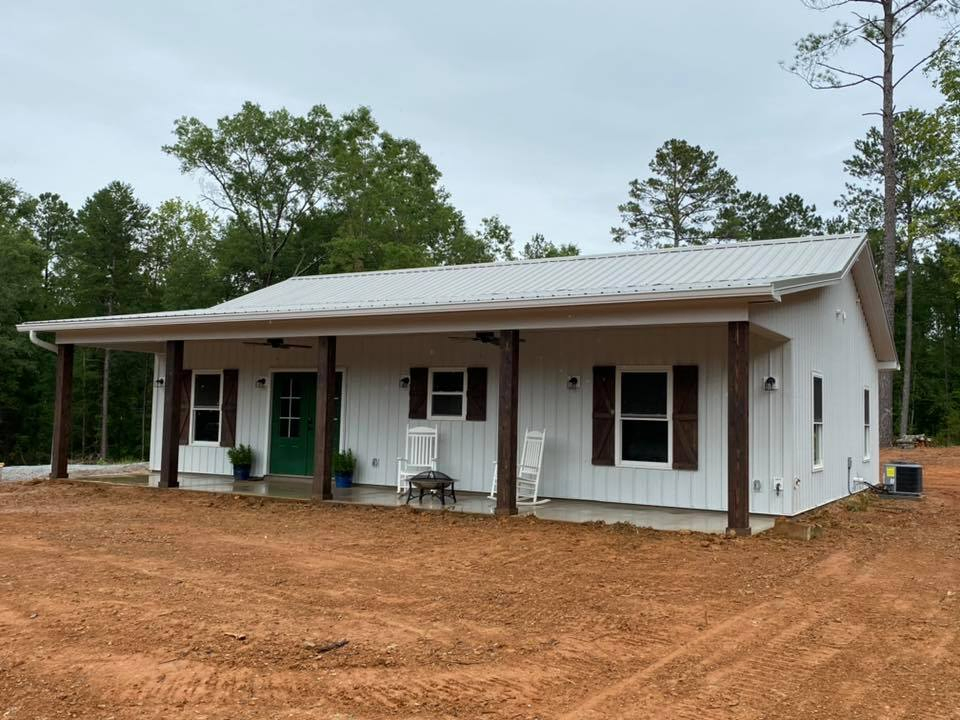
Page Contents
What Is a Barndominium?
The term “barndominium” is used to refer to a broad variety of homes. However, the original barndominiums were barns that were converted into living spaces. The name combines “barn” and “condominium.”
Barns are typically built with pole frame construction. A pole frame features high ceilings and wide-open spaces. Large posts are used to erect the frame and support long roof trusses. Along with barns, pole framing is often used for workshops, garages, horse stables, and event centers.
While barns are traditionally constructed with wood, most newly constructed barndominiums feature steel frames. They also tend to have metal siding and roofing for added durability.
Using pole frame construction with steel posts gives barndominiums many unique advantages over standard homes. The large frames allow for open living spaces and greater flexibility when designing floor plans. Barndos also offer superior protection against severe weather.
What Is a Shouse?
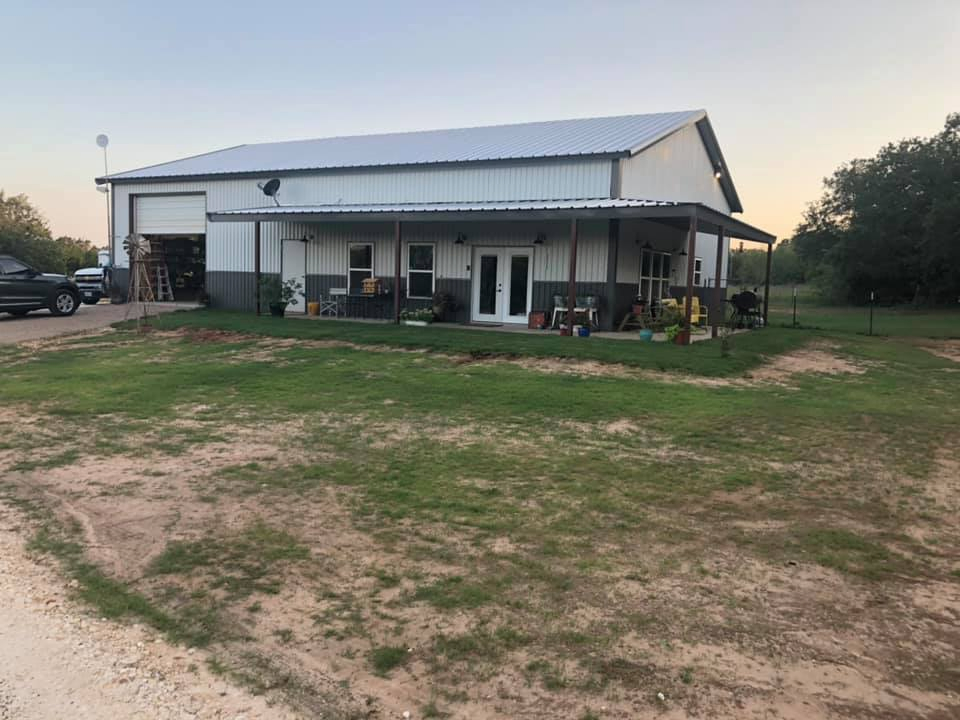
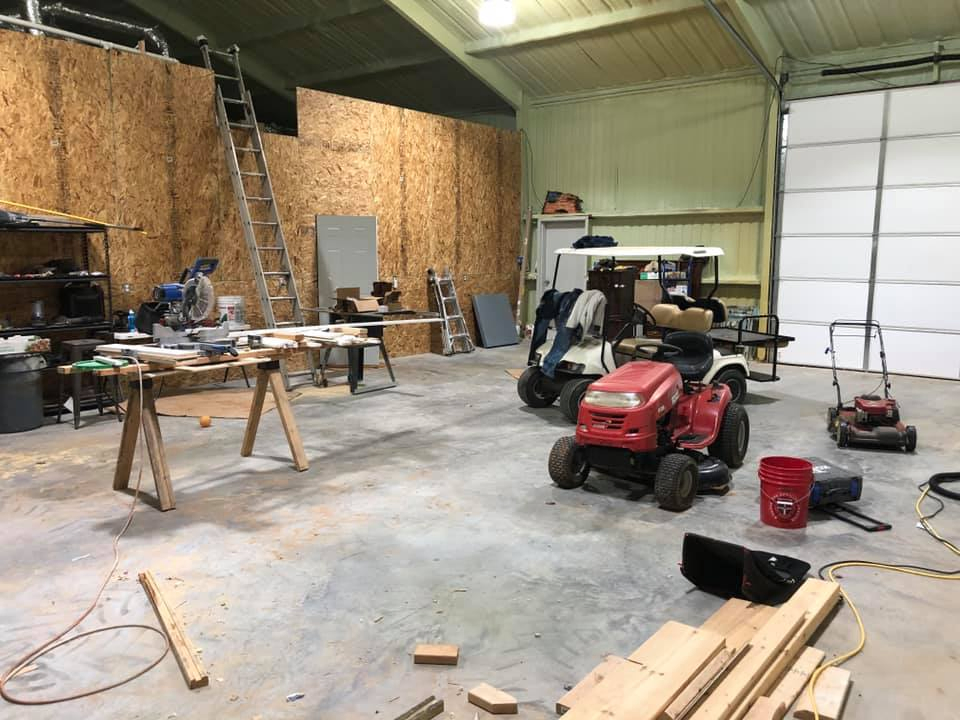
A shouse is a shop house. It is a house with an attached workshop.
Shouses were introduced during the Middle Ages. Blacksmiths, bakers, and other skilled tradespeople often connected their shops to their homes. Combining a home with the workplace was a more efficient arrangement.
Shouses were reintroduced several decades ago in the American Midwest. In rural areas, homeowners started choosing to add workshops to their living spaces. The attached shop is often used for hobbies, recreational activities, extra storage, or carrying out a trade.
While barndominiums were originally barns converted into homes, shouses are often standard single-family homes with an attached workshop. However, many barndominiums and shouses are now built from the ground up to meet the needs of new homeowners.
Many newly constructed barndominiums and shouses come with the same features. In fact, shouses are occasionally called barndominiums. Both types of dwellings typically feature pole frame construction and metal frames.
The main difference between barndominium and shouse construction is the addition of the workshop. Without the workshop, you are simply building a barndominium.
What Are the Advantages of Building a Barndominium?
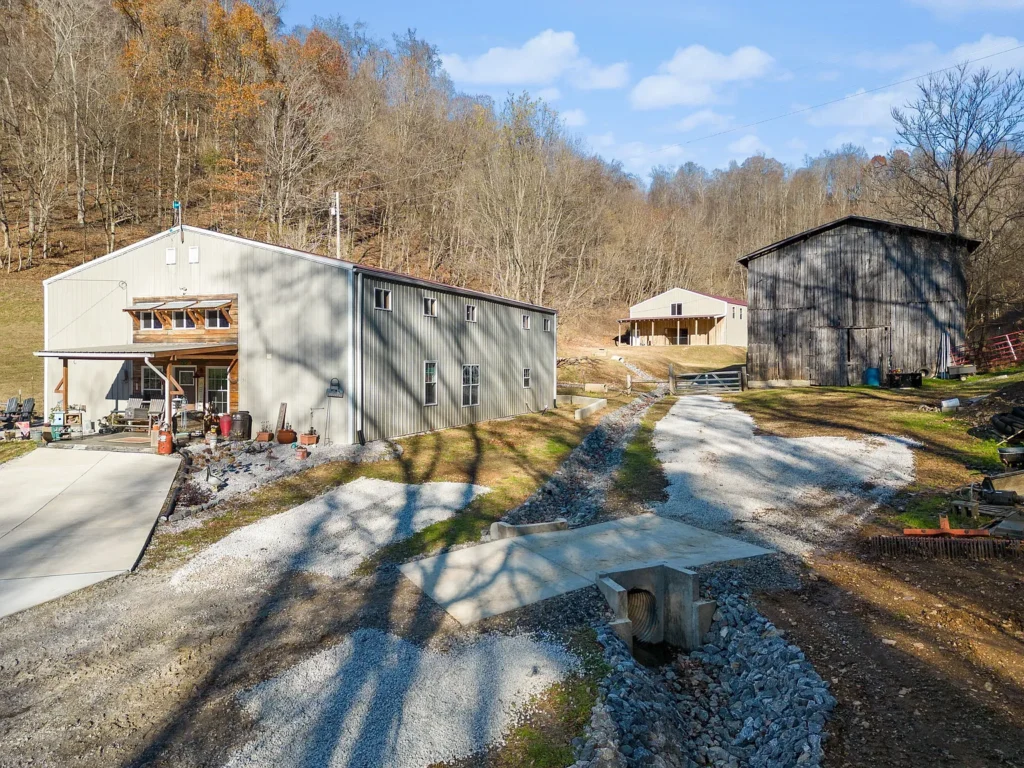
A barndominium provides several advantages compared to a standard residential unit. A shouse built with a metal frame also comes with the same benefits:
- Build your home faster
- Save money on construction
- Protect against severe weather
- Reduce the risk of moisture problems
Pole frame construction often requires less time and labor compared to stud frame construction. You can typically erect a pole frame in a single afternoon with just a few people. Building a stud frame is more time-consuming and labor-intensive.
By choosing a barndominium or a shouse, you may not need to wait as long to move into your new home. You may also save money per square foot when compared to a traditional single-family home.
The average cost of new residential construction is $100 to $155 per square foot. Barndominium construction costs an average of $40 to $100 per square foot for finished interiors and $14 to $18 per square foot for materials.
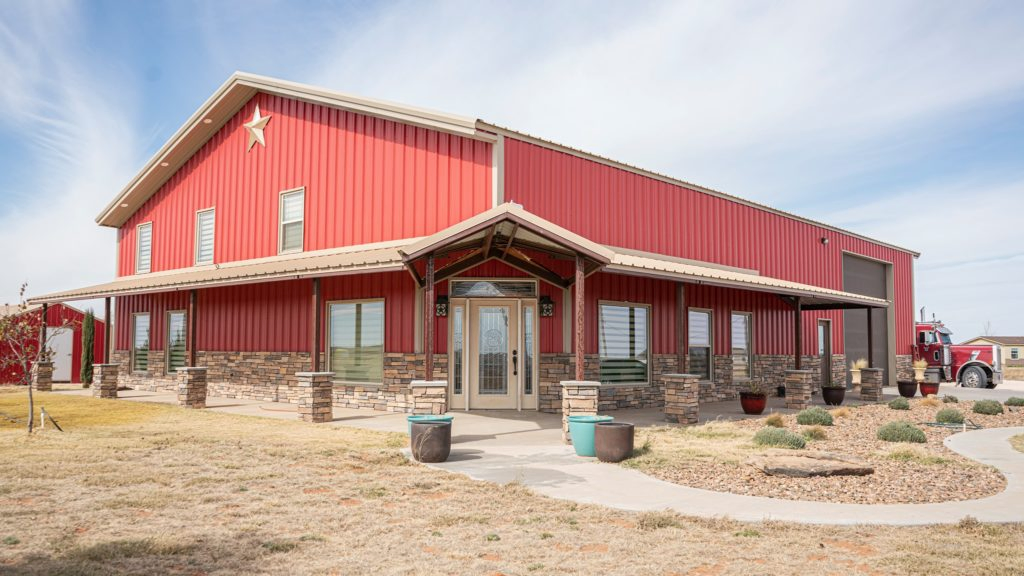
The savings provided by choosing a barndominium or a shouse may allow you to build a bigger home or include more of the design features that you want. For example, the lower cost of building your new home may allow you to add a pool or expensive marble countertops.
Along with saving time and energy, barndominiums save you from weather-related maintenance. Barndominiums are less likely to suffer damage from severe weather, reducing the need for ongoing maintenance.
Metal buildings are also naturally resistant to moisture problems, as the metal does not rot. While metal is prone to rust, there is less of a chance of the metal being exposed to water.
A barndominium also provides a few distinct benefits compared to building a shouse. Choosing to build a barndominium often provides you with more options. As barndominiums are more popular, you can find more designs, blueprints, and resources.
Disadvantages of Building a Barndominium
A barndominium does not come with many disadvantages compared to a traditional single-family home. The main concern is your ability to obtain financing for the construction of the barndominium.
Some lenders are more cautious about approving loans for barndominiums and other nontraditional structures. The loan may come with a higher APR or require the homeowner to put down a larger down payment. However, banks in rural areas, such as farm credit unions, are more likely to have experience with barndominium construction loans.
Other than limited financing options, the only other potential drawbacks to living in a barndominium are related to the metal siding, roofing, and frame.
A metal building can be loud during a heavy rainstorm. It also requires proper insulation to provide adequate heating and cooling efficiency. Metal materials are also prone to rust when exposed to moisture. However, these issues can be addressed during the construction process.
Choosing the right design and material can minimize the sound of rain hitting the roof or siding. Using foam insulation can make a metal building more energy-efficient compared to a wood home. You can also protect against rust by adding overhangs and using an effective gutter system.
What Are the Advantages of Building a Shouse?
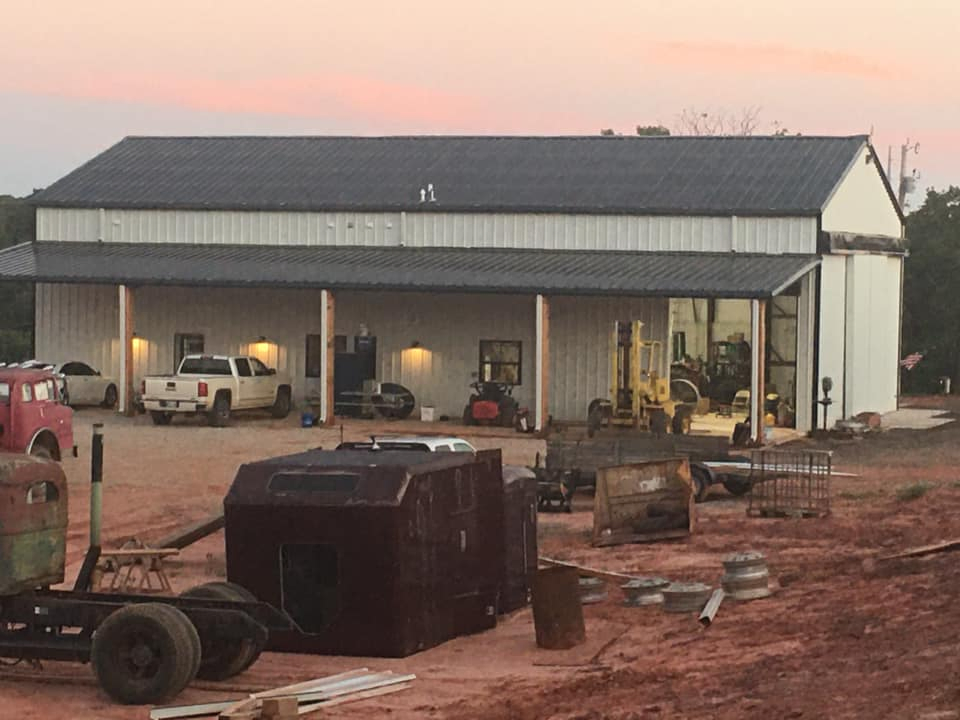
If the shouse is constructed with pole frame construction and a metal frame, it offers the same advantages provided by a barndominium. It can withstand strong winds and last a lifetime with less maintenance. However, adding a workshop to your home can provide a few additional benefits:
- Your work is always within reach
- You can protect tools and equipment
- Keep your work from entering the home
- Cut down on your commute to work
- Enjoy the flexibility of working from home
Adding a workshop to your home ensures that your work is never far away. A snowstorm or broken-down vehicle cannot stop you from getting to work and completing your projects. You simply need to work from your living area to the connected workshop.
If you complete most of your work from the workshop, you may eliminate or reduce your commute to a separate workplace. You can save on gas and car maintenance.
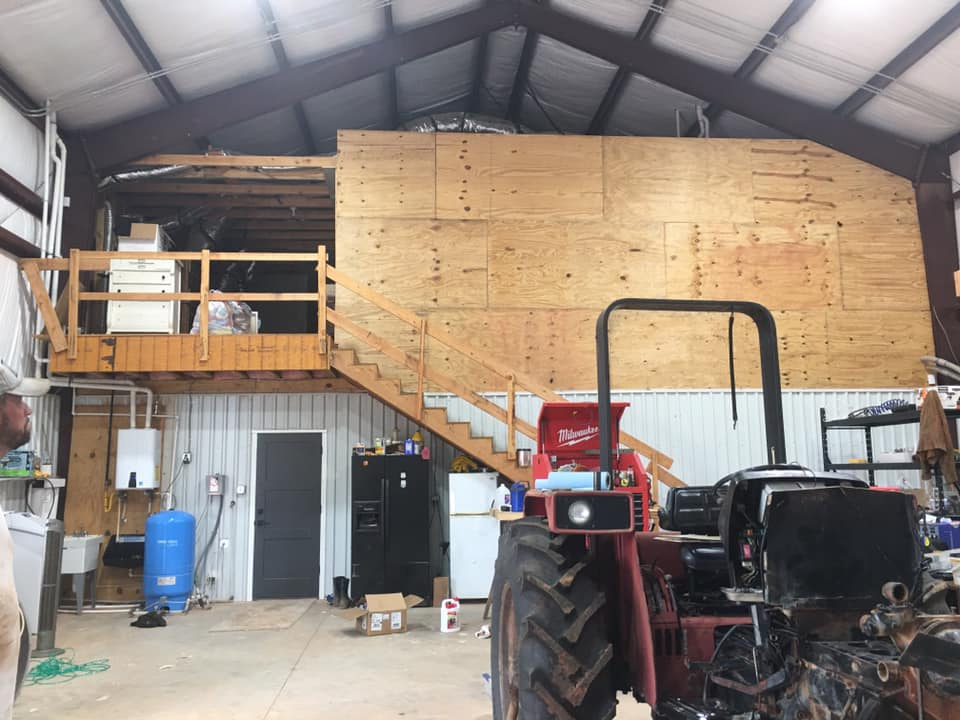
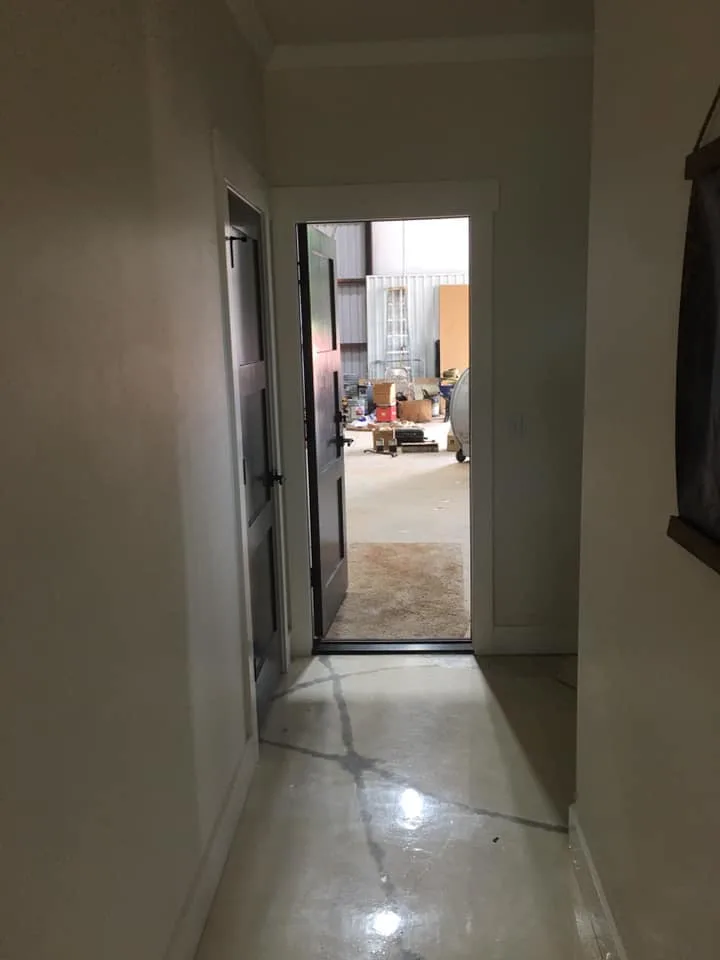
Eliminating or reducing your commute also makes it easier to manage your time. The time that you save can be used to get started on projects earlier, work later, or give yourself more flexibility throughout the day. For example, you can take an extended lunch without having to worry about getting home late.
You may also feel more comfortable storing tools and equipment on your private property compared to a separate site. Without a shouse, your tools may need to stay at a separate shop where you cannot keep an eye on them overnight.
A shop connected to your house may also provide space for bringing tools and equipment inside that you currently store outside. Tractors, lawn equipment, and other gear can rust and break down when left outdoors year-round. A shouse provides a safe spot to store whatever you want.
Building a home with a shop connected to it also provides more design options for the shop. For example, you may decide to make the shop fully insulated and connected to the heating and cooling system in your main home. This can create a climate-controlled environment for storing equipment or materials that require specific storage conditions.
Disadvantages of Building a Shouse
A shouse only comes with a couple of potential drawbacks compared to a barndominium. The first possible issue is the energy efficiency of the property.
If the shop is not adequately insulated, it offers ample space for heat and cool air to escape. The shop may make it more difficult to maintain the temperature in your living area.
Having a large shop connected to your home may also be unnecessary. If you do not have a specific reason for needing a workshop, you may not fully utilize the space.
Another possible disadvantage to choosing a shouse is obtaining financing. As mentioned, some lenders are less likely to approve loans for barndominiums. A shouse is even more obscure, which may further limit your financing options.
Metal Pole Frame Versus Wood Stud Frame Shouses
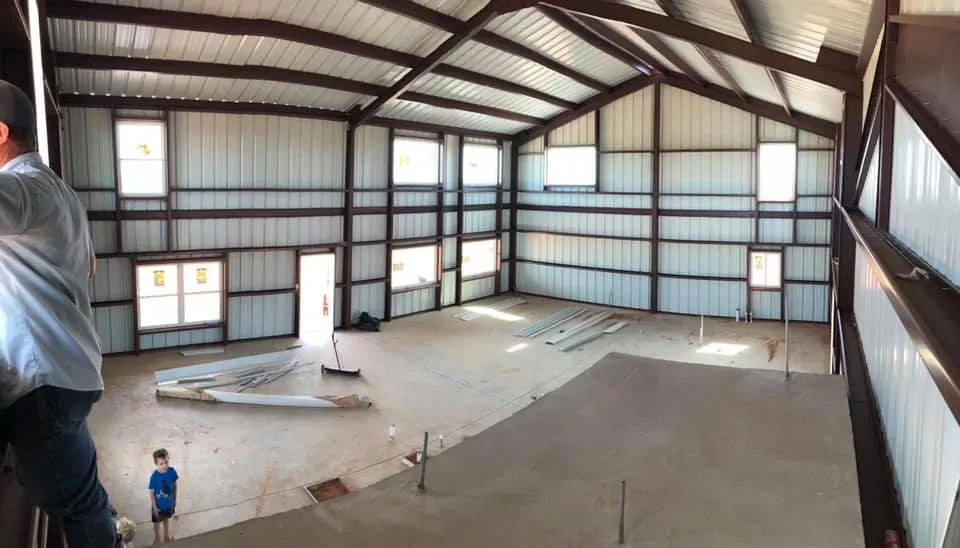
Not all shouses include a pole frame construction and metal frames. Some shouses are built using standard wood stick frames (stud frames).
Using a stick frame reduces the structural strength of the property compared to a metal pole frame. However, choosing stick frame construction may be necessary for specific scenarios.
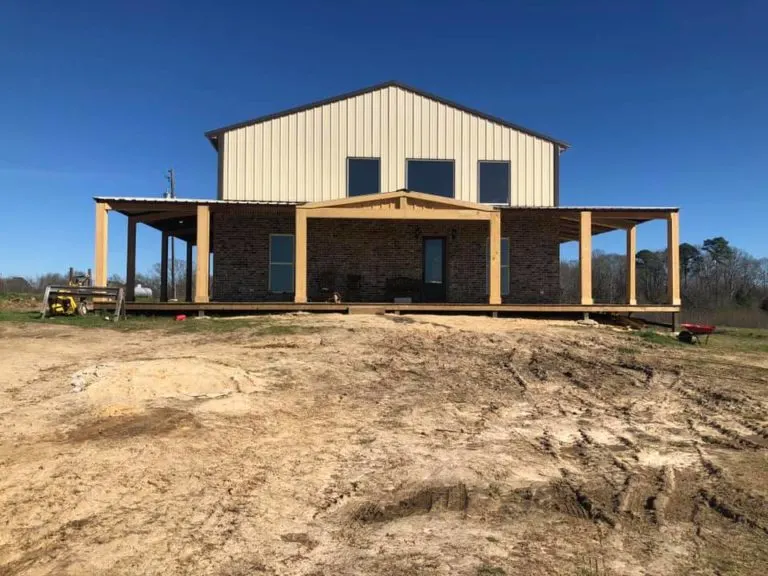
For example, the area where you plan on building your shouse may not allow pole frame construction for residential properties. You may also find it easier to obtain a home construction loan for a home built using a traditional stud frame compared to a metal building.
While choosing a stud frame for a shouse eliminates some of the benefits provided by a metal structure, you can still enjoy the benefits of having a connected workshop. You still receive extra space that can be used to complete work projects or hobbies.
How to Choose Between a Barndominium vs Shouse
You first need to consider whether you can convert an existing home or barn. If you already have a home in a rural area and want more space, converting your home into a shouse may save time and money.
You can retain your existing single-family home and add a workshop on the property. The workshop can be connected to the main dwelling via a door or opening.
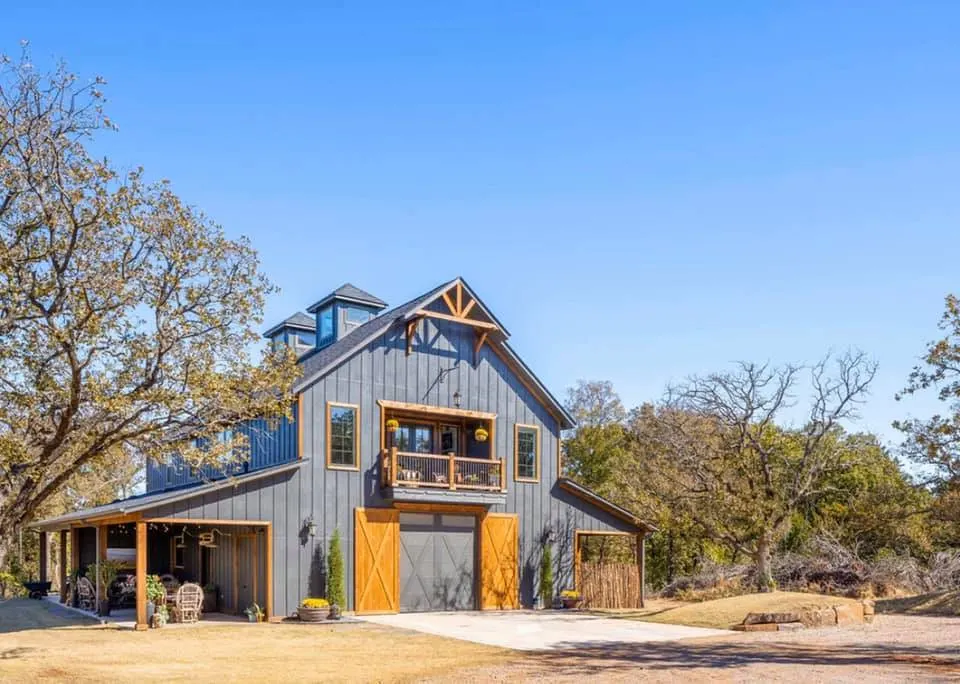
As mentioned, the original barndominiums were barns that were converted into living spaces. However, converting an existing barn is no longer the ideal solution. Most barndominiums are newly built structures, which allow for the use of metal frames instead of the wood pole frames often used in barns.
For those looking to build a new home on vacant land, you can choose to build a barndominium or a shouse. To help with the selection, decide whether you need to have a workshop connected to your home.
Some of the most common uses for workshops include:
- Work
- Hobbies
- Recreational activities
- Vehicle storage
If your profession involves work that can be completed from a shop, a shouse can save time, energy, and money. You can carry out your trade without having to leave your property. You may find it easier to maintain a healthy work/life balance and complete projects quicker.
A connected workshop is also useful for hobbies and recreational activities. For example, you may use the space for your gardening equipment, crafting and sewing gear, or specialized machinery.
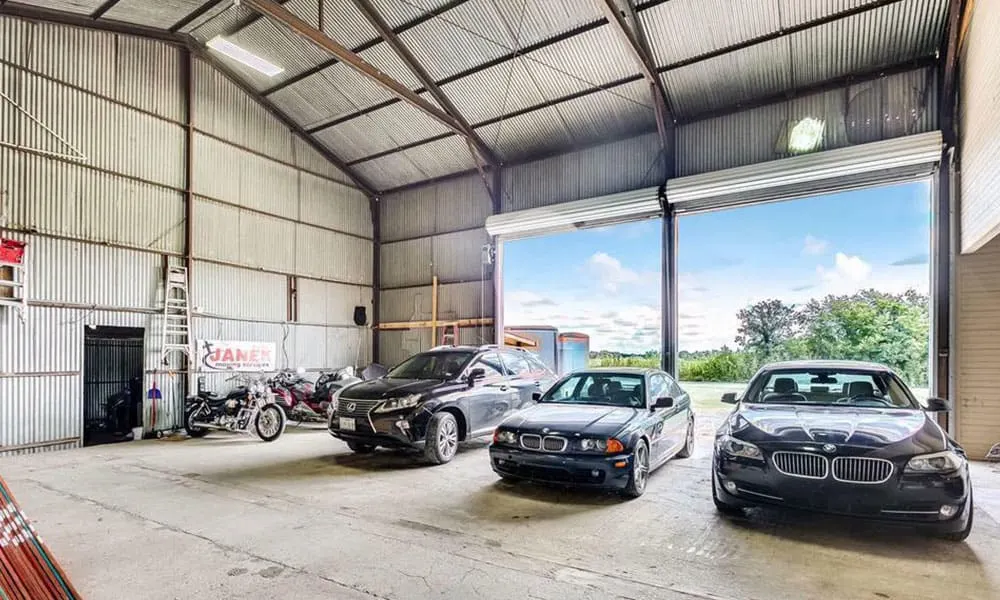
Some shouse owners use their workshops for vehicle storage. The large pole frame can accommodate taller and wider garage doors, which is useful for parking large vehicles indoors. You can protect an RV or a tractor from the elements.
These are a few examples of how people use the shops connected to their shouses. For those who do not anticipate the need for a shop, a shouse may not offer any extra benefits over a barndominium.
Conclusion
A shouse may be considered a type of barndominium, especially when it features a metal frame built with pole frame construction. It is basically a barndominium with a shop attached to one side of the living area.
In the end, a shouse is best suited for those who need a dedicated space for their work or a hobby.
If you do not require a large open space to use as a workshop, a standard barndominium may make more sense. Instead of attaching a workshop to your home, you may choose to increase the square footage of your living area.
If you would like more guides like this one, check out the rest of BarndominiumLife.com. There, you will find more helpful tips and tricks from the pros. You will also find featured barndominiums, barndominium floor plans, and information on financing and insurance. Knowing as much as you can will help you get the best results for your dream home.
Gail currently spends her free time geeking out about what’s new and trending in the world of barndominiums.
She is the former executive editor of BarndominiumLife.com and loves working with the team and members of the barndominium community. She now contributes to the blog on occasion, but only when she feels like it!
